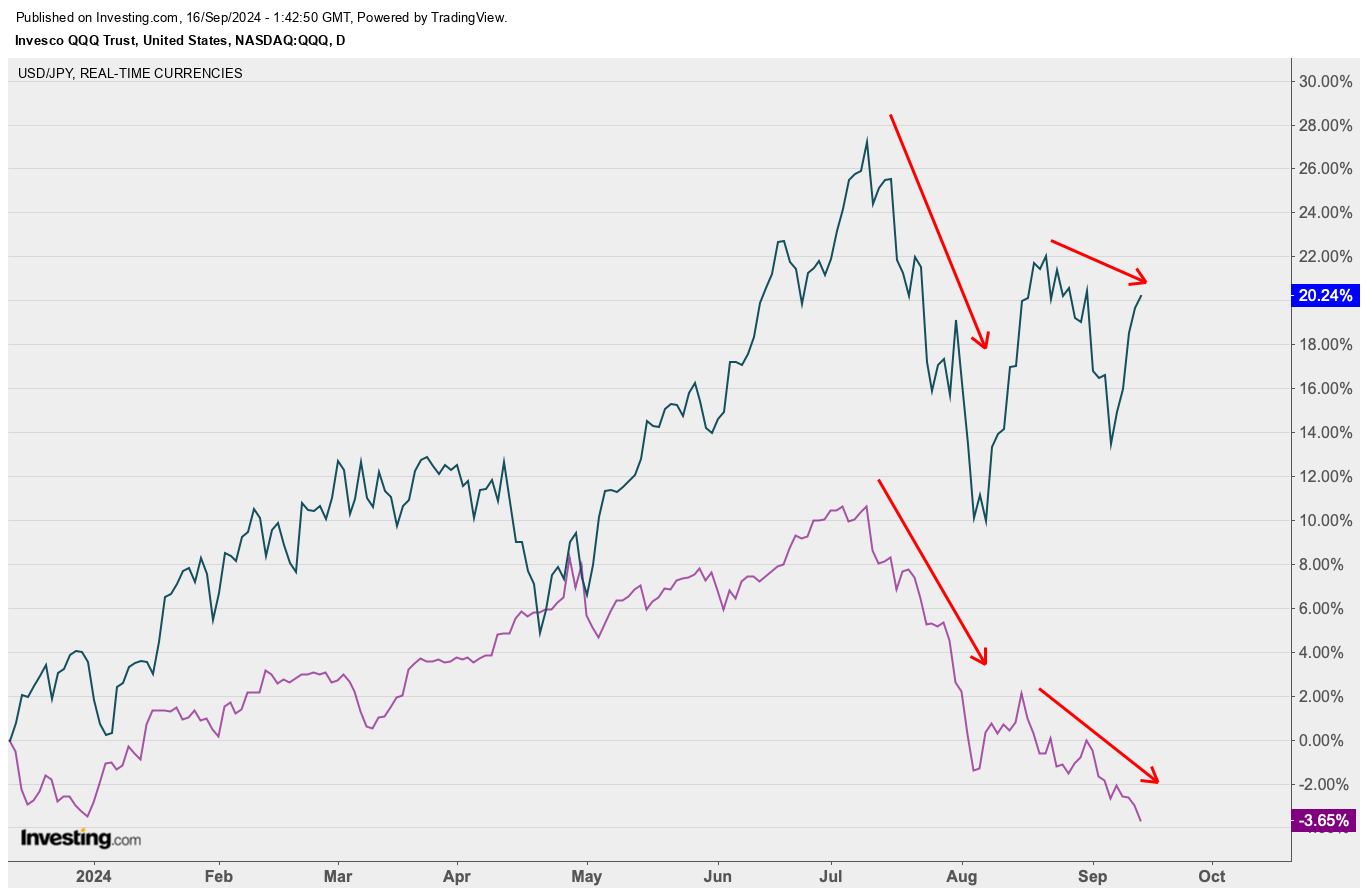US CPI – slow improvement
The long awaited report is out. According to GS:
August’s US headline consumer price index came in 0.2% month-over-month and 2.5% year-over-year, in line with expectations and below its 20-year average for the first time since 2020. However, core CPI rose 0.3% month-over-month (above +0.2% expectations) to the highest level in four months, indicating there’s still room to tame inflation, despite controlled headline data. Shelter prices remained stubbornly sticky, climbing 0.5%, the biggest increase since the start of the year and the second month of acceleration. Lingering inflation was also evident by headline and core producer price index readings that came in firmer than expected at 0.2% and 0.3%, respectively.
Most likely we will get a 25bp cut but the key will be what would the dot plots say? A lower year end target for rates can be a tailwind for risk assets.
Can Key Day Reversal (KDR) overcome a weak start to September?
US equities started September on a weak note. Last week saw some strong buying, with cyclical sectors like housing and regional banks displaying KDRs and positive followups (another positive close). As we head into the FED meeting, the market signals are positive, suggesting that the momentum should carry equities higher in the months ahead. So the risk of a recession is still low and the odds of a soft landing remain higher.
JPY carry trade effect over?
Based on the price action of the largest technology stocks in US markets, and the performance of the USDJPY, it seems to indicate that the effect of the carry trade reversal is diminishing. Since mid-August, the JPY has strengthened again, making new highs against the USD (it’s inverse on the chart). However the QQQ, which tracked the top 100 stocks on Nasdaq, staged a strong rebound to recover much of the losses. Either much of the trade has been unwound, or the thesis was not solid in the first place, i.e. investors did not borrow free JPY to invest in tech stocks.


